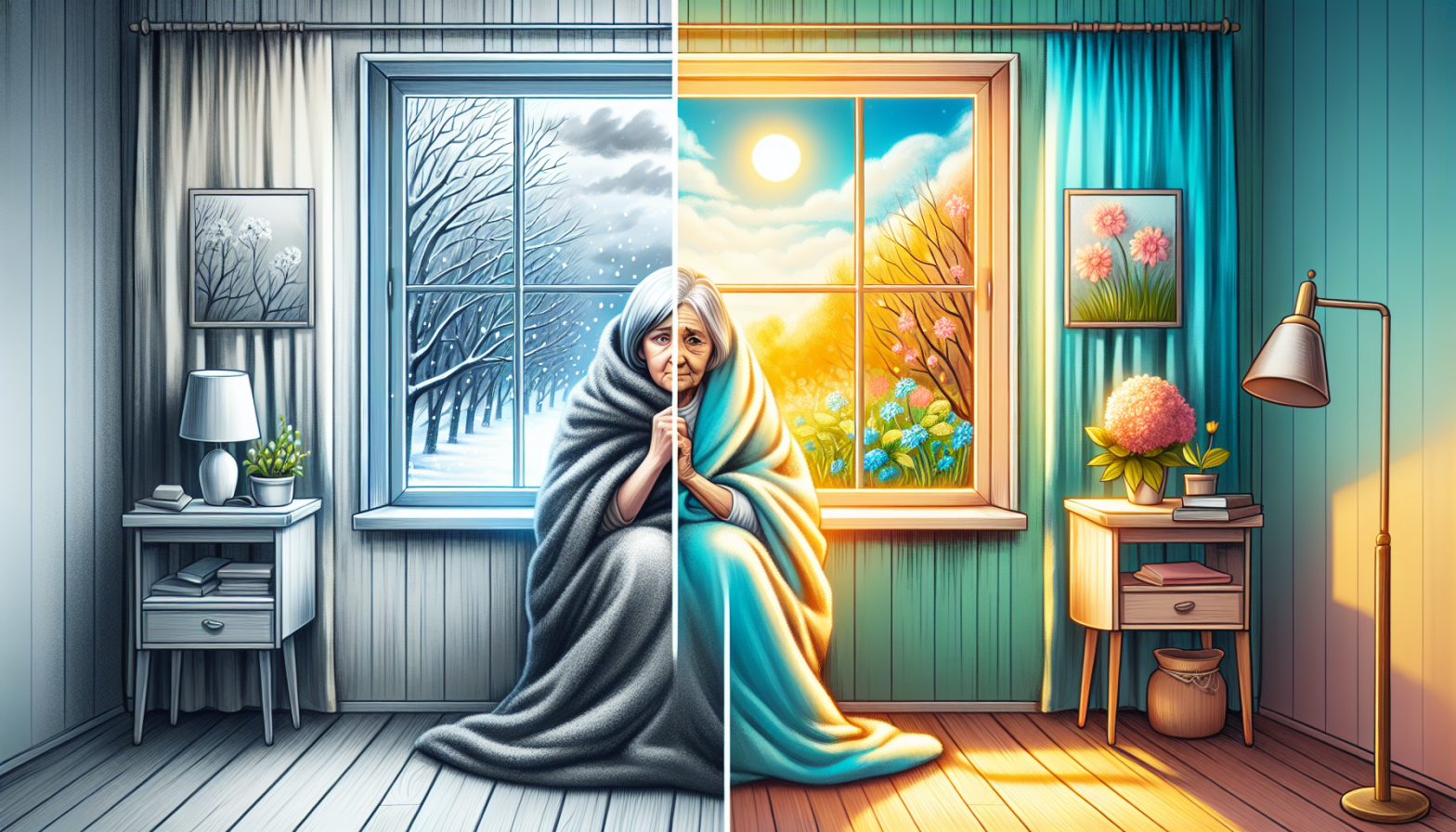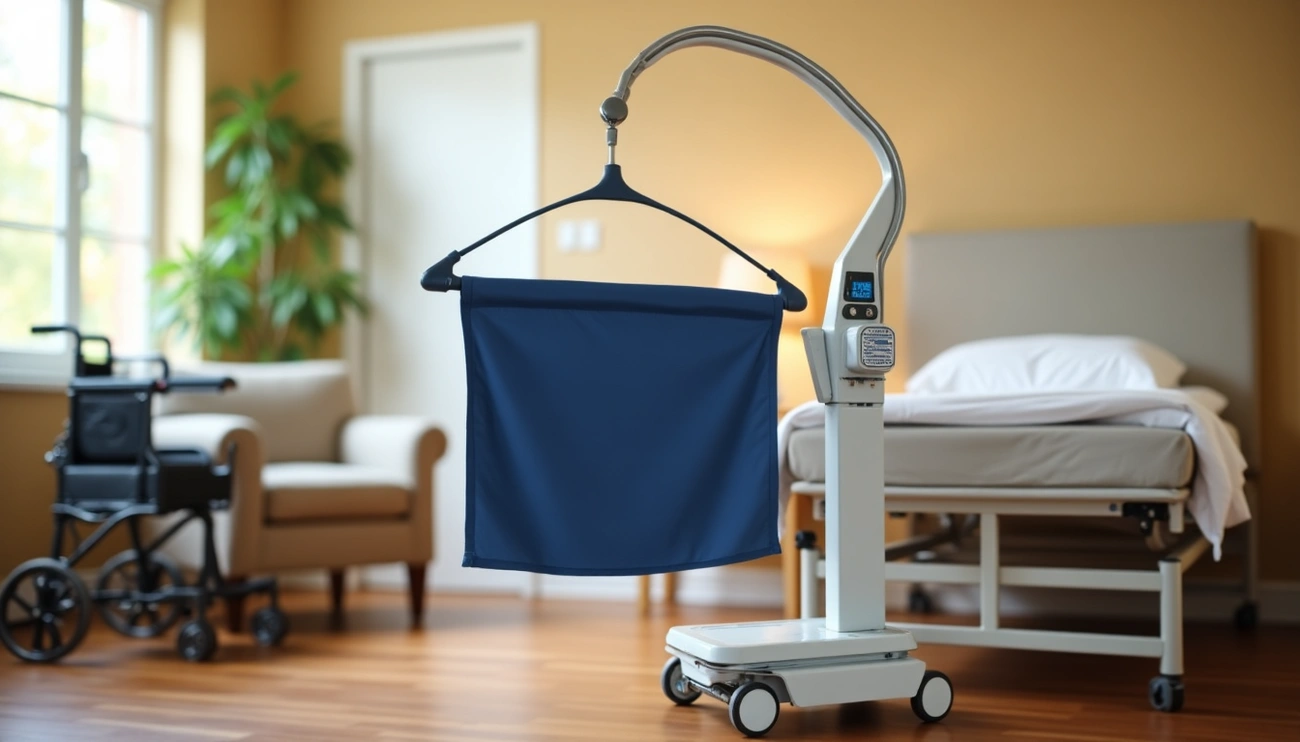As winter approaches, many seniors experience more than just a change in temperature. Seasonal Affective Disorder (SAD) in seniors is a serious condition that can significantly impact their well-being. This form of depression, linked to changes in seasons, can cause fatigue, mood changes, and even cognitive issues like brain fog. Understanding how SAD affects older adults is crucial, as its symptoms can often be mistaken for other age-related health concerns.
This article explores the unique challenges of Seasonal Affective Disorder in seniors. We’ll look at common symptoms, risk factors, and diagnosis methods specific to older adults. Additionally, we’ll discuss effective treatment options, including light therapy, cognitive behavioral therapy, and strategies to address vitamin D deficiency. By examining how SAD disrupts circadian rhythms and melatonin production in seniors, we aim to provide valuable insights for managing this condition and improving quality of life during darker months.
Understanding Seasonal Affective Disorder in Seniors
Definition of SAD
Seasonal Affective Disorder (SAD) is a type of depression linked to changes in seasons. It typically begins and ends at the same times each year, with symptoms often starting in late fall or early winter and resolving during spring and summer months. This pattern is known as winter-pattern SAD or winter depression. In rare cases, SAD can cause depression in spring or early summer, resolving during fall or winter.
Prevalence in older adults
While SAD is diagnosed more frequently in women and younger adults, it remains a significant concern for seniors. Among the 34 million Americans aged 65 and older, over two million suffer from some form of depression. SAD in older adults is often overlooked, as approximately 68% of seniors have little to no knowledge about depression. Alarmingly, 58% of people aged 65 and older believe it’s “normal” to get depressed as they age.
Causes of SAD in seniors
Several factors contribute to SAD in older adults:
- Reduced sunlight exposure: Shorter winter days lead to decreased sunlight, affecting serotonin levels, a brain chemical that regulates mood.
- Vitamin D deficiency: Older adults are at higher risk of vitamin D deficiency due to reduced skin production and limited sun exposure. This deficiency can exacerbate SAD symptoms.
- Melatonin imbalance: SAD relates to altered levels of melatonin, a hormone crucial for maintaining normal sleep-wake cycles. People with winter-pattern SAD may produce too much melatonin, increasing sleepiness and leading to oversleeping.
- Isolation and loneliness: Older adults are more likely to experience isolation, especially during winter months, which can worsen SAD symptoms.
- Chronic illnesses: Other health conditions common in seniors, such as Alzheimer’s disease, Parkinson’s disease, and arthritis, can trigger or exacerbate depression symptoms.
Common Symptoms of SAD in Older Adults
Seasonal Affective Disorder (SAD) in seniors can manifest differently compared to regular depression. The symptoms often vary depending on whether it’s winter-pattern or summer-pattern SAD. Understanding these distinctions is crucial for proper diagnosis and treatment.
Winter-pattern SAD symptoms
Winter-pattern SAD typically causes:
- Persistent sad, anxious, or “empty” mood
- Feelings of hopelessness or pessimism
- Loss of interest in previously enjoyed activities
- Decreased energy and fatigue
- Difficulty concentrating and making decisions
- Changes in sleep patterns, particularly oversleeping
- Overeating, especially craving carbohydrates
- Weight gain
- Social withdrawal, feeling like “hibernating”
Summer-pattern SAD symptoms
Although less common, summer-pattern SAD can cause:
- Trouble sleeping (insomnia)
- Poor appetite leading to weight loss
- Restlessness and agitation
- Increased anxiety
- Irritability
- Violent or aggressive behavior
Differences from regular depression
SAD symptoms in older adults can be mistaken for other age-related health issues. Unlike regular depression, SAD is specifically related to changes in daylight hours, not calendar events or predictable seasonal changes. It’s important to note that SAD symptoms occur at the same time each year and resolve during other seasons.
Seniors with SAD may experience additional challenges due to comorbid medical conditions, inactivity, and changes in social support. They might present with atypical symptoms like unexplained somatic complaints, cognitive difficulties, or a lack of interest in personal care. These factors can make diagnosis more challenging, highlighting the need for comprehensive evaluation by healthcare professionals.
Diagnosis and Risk Factors for Seniors
Diagnostic criteria
Seasonal Affective Disorder (SAD) is classified as a subtype of major depressive disorder with a seasonal pattern. To receive a diagnosis, seniors must meet the criteria for major depressive disorder and show a consistent pattern of depressive episodes during specific seasons for at least two consecutive years. These episodes should occur more frequently during the particular season than at other times of the year. It’s important to note that not all individuals with SAD experience symptoms every year.
Risk factors specific to older adults
Several factors increase the likelihood of SAD in seniors:
- Gender: Women are diagnosed more often than men.
- Family history: Those with relatives who have SAD or other forms of depression may be at higher risk.
- Existing mental health conditions: Seniors with major depression, bipolar disorder, or other mental illnesses are more susceptible.
- Geographic location: Living far from the equator increases the risk due to decreased sunlight during winter months.
- Vitamin D deficiency: Lower levels of vitamin D, often due to reduced sun exposure, can contribute to SAD.
- Isolation and loneliness: Older adults may experience increased social isolation, especially during harsh winters.
Importance of professional assessment
Professional evaluation is crucial for accurate diagnosis of SAD in seniors. Symptoms can be mistaken for cognitive decline or normal aging effects, leading to underdiagnosis. A comprehensive clinical evaluation, including a detailed patient history and mental status examination, is necessary. Healthcare professionals must rule out other medical conditions, such as hypothyroidism or viral infections, which can mimic SAD symptoms. Additionally, they should consider other psychiatric disorders that may present with similar symptoms. Proper diagnosis enables appropriate treatment and improves the overall well-being of seniors experiencing seasonal mood changes.
Effective Treatment Options for Elderly with SAD
Light Therapy
Light therapy has emerged as a primary treatment for Seasonal Affective Disorder (SAD) in seniors. This non-pharmacologic approach involves exposure to bright artificial light, typically using a light box that emits 10,000 lux. Seniors sit in front of this device for about 30-45 minutes each morning, preferably soon after waking. Light therapy aims to compensate for the reduced natural sunlight during darker months, helping to regulate the body’s internal clock and mood-affecting hormones. Studies have shown that light therapy can be as effective as antidepressant medications for both seasonal and non-seasonal depression, with symptoms often improving within a week.
Psychotherapy
Cognitive Behavioral Therapy (CBT) has been adapted specifically for SAD (CBT-SAD). This form of talk therapy helps seniors identify and change negative thoughts and behaviors associated with depression. CBT-SAD teaches coping skills, stress management techniques, and ways to challenge unhelpful thought patterns. For older adults, psychotherapy can be particularly beneficial in exploring the underlying causes of seasonal depression and developing personalized coping strategies.
Medication
Antidepressants can be effective for treating SAD in elderly patients, especially when symptoms are severe. Selective Serotonin Reuptake Inhibitors (SSRIs) are commonly prescribed to older adults. Some healthcare providers may recommend starting antidepressant treatment before the typical onset of seasonal symptoms. It’s important to note that antidepressants may take 4-8 weeks to show full benefits, and finding the right medication may require some trial and error.
Lifestyle Changes
Encouraging seniors to make certain lifestyle adjustments can significantly help manage SAD symptoms. These include:
- Increasing physical activity and maintaining a healthy diet
- Ensuring 7-9 hours of sleep each night
- Engaging in social activities and maintaining connections with friends and family
- Participating in enjoyable hobbies or activities
- Spending time outdoors, especially in the morning, to increase natural light exposure
Conclusion
Seasonal Affective Disorder has a significant impact on seniors’ well-being, with unique challenges that often go unrecognized. Understanding its symptoms, causes, and risk factors is crucial to provide proper care and support for older adults. This condition goes beyond mere “winter blues,” affecting mood, energy levels, and overall quality of life in ways that can be mistaken for other age-related issues.
Thankfully, there are several effective treatments to manage SAD in seniors. From light therapy and psychotherapy to medication and lifestyle changes, these approaches offer hope to improve the lives of older adults struggling with seasonal depression. By raising awareness and encouraging timely intervention, we can help seniors navigate the darker months with greater ease and maintain their mental health year-round.
FAQs
What is Seasonal Affective Disorder (SAD) in older adults?
Seasonal Affective Disorder (SAD) is a type of depression that recurs with seasonal changes, commonly during winter. Seniors are particularly susceptible to SAD, especially in regions with severe winter conditions.
How can Seasonal Affective Disorder be managed in seniors?
Managing SAD effectively involves several strategies, including maximizing exposure to natural sunlight, maintaining a regular exercise routine, and managing stress levels. Additionally, light therapy using a special lamp to simulate sunlight can be beneficial.
Which antidepressants are effective for treating Seasonal Affective Disorder?
Selective Serotonin Reuptake Inhibitors (SSRIs) are commonly used to treat SAD. Medications like Wellbutrin XL and Aplenzin are also FDA-approved for this condition. While some people use vitamin D supplements, their effectiveness is still debated.
How can I support someone suffering from Seasonal Affective Disorder?
Supporting someone with SAD involves several thoughtful actions: be present and let them know you’re there for support, encourage them to seek professional help, avoid critical comments, be sensitive about discussing weather changes, inquire about what they find helpful, assist in planning, maintain regular contact, and take care of your own wellbeing while helping them.












